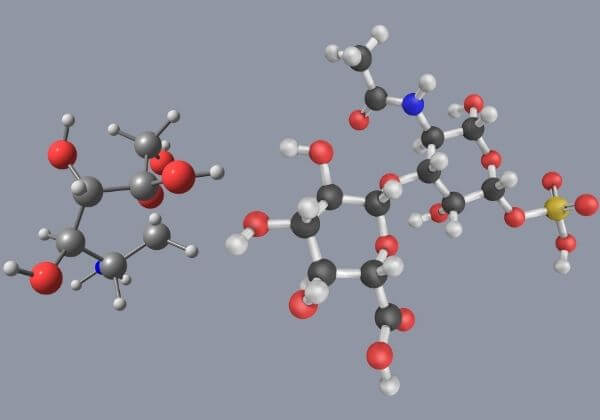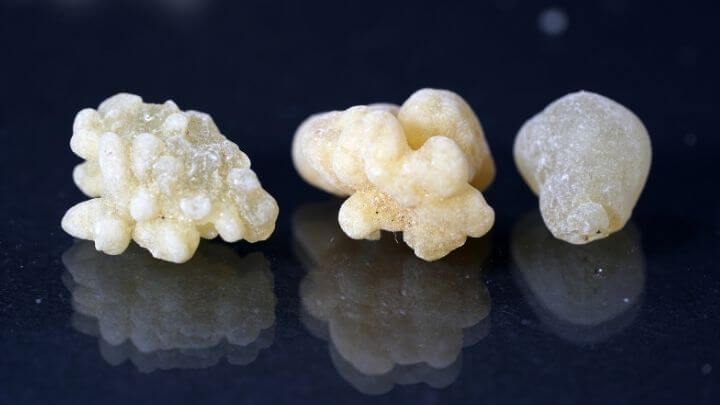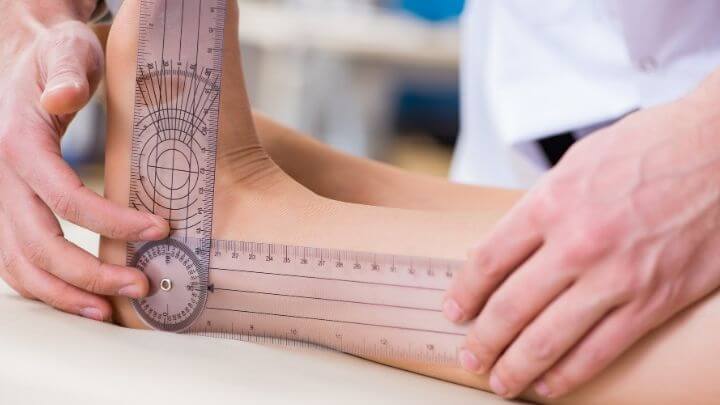The Dangers of Glucosamine and Chondroitin
Many people seek glucosamine and chondroitin for joint pain relief, but there are more efficacious options. Here’s how your joints can benefit from MoveMD®️.
8 minute read
Last Updated January 22, 2021
Many people seek glucosamine and chondroitin for joint pain relief, but there are more efficacious options. Here’s how your joints can benefit from MoveMD®️.
8 minute read
Last Updated January 22, 2021

Glucosamine and chondroitin are compounds found naturally in cartilage. Glucosamine is a sugar that helps your body produce cartilage, while chondroitin helps to maintain flexibility. Their presence in normal joint tissue has led to their use in joint health supplements. As an alternative treatment for joint pain, glucosamine and chondroitin are commonly used to improve joint health and function. But are they more harmful than beneficial?
Cartilage is the smooth elastic material that cushions your joints so they can move easily. As the body ages, cartilage naturally deteriorates. The synovium, a thin membrane within the joint, produces synovial fluid to keep cartilage healthy. As the cartilage wears down, the synovial membrane can thicken.
The combination of inadequate lubrication from synovial fluid and cartilage deterioration may cause the bones in your joints to begin to rub together. This causes pain and swelling. The older you get, the more common it is to feel achiness, pain, and stiffness in your joints.
The risk of degenerative joint problems increases with age and is associated with the risk of falls and fractures. With regular joint care, you can reduce these risks and support proper joint function and health. To do this, many turn to glucosamine and chondroitin supplements.
Are glucosamine and chondroitin beneficial for joint pain? Both supplements provide protection for specialized cells known as chondrocytes. These cells help to maintain the structure of cartilage. Taking these supplements may slow the deterioration of cartilage, which can reduce long-term pain. The trouble is that there are unpleasant side effects associated with these supplements.

The most common side effects include:
♦ Nausea
♦ Diarrhea
♦ Upset stomach
There are potential problems when supplementing substances that are naturally found in the body. The effects of these supplements may be unpredictable when using higher than physiologic dosing and in a different formulation than the body is accustomed to. Glucosamine and chondroitin are both natural, but the doses and formulas found in many dietary supplements are markedly different from the natural form in your body. The outcome can be more negative than positive in terms of joint health.
Glucosamine sulfate, which is the most common version used in supplements, may increase insulin resistance. For patients that need to monitor blood sugar levels, this can be dangerous. Increased insulin resistance can lead to higher blood sugar levels as well as higher blood pressure. Chondroitin can also interfere with the effect of blood thinners. These effects mentioned above can lead to adverse cardiovascular outcomes.
Other issues with glucosamine and chondroitin supplements are the pill size and dosing. The capsules are often large and difficult to swallow, and many brands require taking anywhere from 4 to 6 pills per day to see results. These larger doses are more effective, but the risk of side effects also increases with higher doses. Taking many large pills every day is an inconvenience and can lead to missing doses and can possibly lead to more side effects.
There are alternatives to glucosamine and chondroitin for better joint health and improved joint function and mobility. The clinically proven natural ingredients found in MoveMD® are more effective in promoting relief for those suffering from disabling joint symptoms.
MoveMD® is a proprietary patented joint formula combining ingredients touted by researchers in the latest joint health scientific literature. Both aging and over-activity play a part in the natural progression of joint degeneration. This natural degeneration results from damage caused by free radical activity, causing pain that makes it difficult to perform everyday tasks. The clinically proven formula of MoveMD® was developed to reduce joint discomfort and promote optimal joint health and function. The ingredients are naturally-derived, there is less risk of side effects, and you only need one small pill each day.

Boswellia serrata, or Indian frankincense, is a plant-based gum resin extract. It has been used for centuries to reduce pain and swelling. This resin facilitates smoother joint movement and reduces painful swelling in joints. It achieves this by inhibiting the activity of enzymes that can contribute to joint dysfunction. Beyond natural pain relief, Boswellia serrata can also reduce connective tissue degeneration and promote cartilage repair.
Hyaluronic acid is produced naturally in the body and, specifically, is a component of the synovial fluid that keeps your joints lubricated and cartilage healthy. As you age, the production of hyaluronic acid decreases, making supplementation essential for joint health maintenance. Supplementing hyaluronic acid provides for more effective pain relief with little to no side effects.
Astaxanthin is a powerful antioxidant found in krill and microalgae. Joints are especially susceptible to free radical damage, making highly bioavailable astaxanthin essential for joint health and function. Zanthin® Natural Astaxanthin neutralizes free radicals to protect your joints from degeneration and pain. Studies have found that astaxanthin may provide better joint protection than glucosamine and chondroitin and is rapidly becoming one of the go-to ingredients for relieving joint distress.
Multiple types of collagen exist; however, type II collagen is especially effective for improving cartilage strength and elasticity. It is found naturally in cartilage and can restore and maintain healthy joints. Undenatured type II chicken collagen has been shown to stimulate collagen cell synthesis to promote cartilage repair, and it enhances antioxidant protection and joint lubrication. Studies prove that it can work more effectively to repair joints than glucosamine and chondroitin.
Type X.I.V. eggshell membrane collagen is an advanced combination of three different collagen subtypes. It has been proven to be an effective and safe therapeutic option for the treatment of discomfort and inflexibility associated with joints and connective tissue. Type X.I.V. eggshell membrane collagen is excellent, as it is derived from the eggshell membrane using an extraction method that preserves its important natural compounds.

It has outperformed many other joint health ingredients on the market. It's also clinically shown to increase range of motion and significantly reduce joint discomfort in as little as seven days. This type of collagen contains essential nutrients that support muscular and skeletal health, promote cartilage synthesis, and decrease the risk of joint deterioration.
Many people seek relief from joint pain in glucosamine and chondroitin supplements, but other dietary supplements are, in fact, more efficacious and better tolerated. Your joint health can benefit from the natural ingredients found in MoveMD®.
This revolutionary joint health solution provides Boswellia serrata and hyaluronic acid to help reduce joint discomfort and astaxanthin and collagen to help improve range of motion and joint function. With virtually no side effects and ingredients that precisely target your joints, this is the supplement I personally recommend.
Dr. Adam Kreitenberg

Dr. Adam Kreitenberg is dual board-certified in both rheumatology and internal medicine. He completed his internal medicine internship, residency, and rheumatology fellowship at the University of Southern California and Los Angeles County Medical Center.
Be first in line for major savings, fitness and nutrition tips, health news, and more